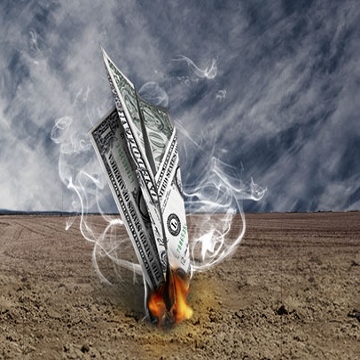How Central Bank Intervention Can Impact The Price of Gold

Currency Intervention by Central Banks
Central banks are institutions that oversee and manage a country’s currency. To name a few, the Bank of Japan (BOJ), the Bank of England (BOE) and the United States Federal Reserve (the Fed) make headlines each month with their interest rate management, economic forecasts, and overall efforts aimed at providing consistent economic growth and stability.
The Fed and its counterparts are directly tasked with control over the production and distribution of money and credit. Each central bank oversees and manages its nations’ money supplies through changes in interest rates, currency intervention, reserve requirements and acting as the lender of last resort to the banking sector. Controlling the money supply for a country is vital for the health and growth of an economy. The amount of money in circulation impacts the unemployment rate, overall economic growth, interest rates and GDP. Actions like currency intervention can also have an impact on the price of gold.
Central Banks and Currency Tactics
While central banks use many tactics in order to strengthen their economies, currency intervention enables countries to directly influence the value of their currencies for the purpose of improving the exchange rate on exports. A falling exchange rate results in imported goods becoming more expensive for its citizens. Currency intervention is a vital operation that each central bank employs in order to stabilize or increase competitiveness of its nation’s economy.
Central banks are key players in the foreign exchange (forex) market, where participants are able to buy, sell and exchange the world’s currencies. By engaging in tactical buying and selling of currencies and corresponding bonds, central banks are able to influence and hedge the value of their currencies.
Currency intervention directly impacts the value of the U.S. Dollar, which in turn has widespread ramifications on the price of exports, imports and the price of alternative assets such as precious metals and real estate.
As discussed in a relevant article, the price of gold is strongly correlated to the value of the U.S. Dollar. A stronger U.S. dollar typically lowers the price of gold, whereas a weaker U.S. dollar results in the price of gold increasing.
Currency Games
Adding another layer of complexity to the equation -- while central banks are hard at work buying or selling their own currency to impact the overall value, they are also hard at work purchasing gold to hedge against the risk associated with foreign currency purchasing and selling.
Today, central banks or countries – including the U.S. -- continue to hold massive gold reserves. In fact, the U.S. has the largest gold reserves at over 8,000 tons. Why do they still buy gold? Largely because it acts as a hedge against the U.S. dollar as they have an inverse relationship. Russia and China have been significant buyers for the past several years.
Bottom Line for an Investor’s Portfolio
These so-called “currency wars” can have a negative impact on retirement portfolios since a currency devaluation for the U.S. dollar would similarly reduce the value of an investor’s portfolio if it is primarily held in U.S. currency. Just as countries do, individual investors can use gold as a hedge against this devaluation risk. Also, when currency wars do heat up, increased global demand for gold could push gold prices higher.
Understanding how central banks influence their own currency, especially when it comes to purchasing gold, is helpful insight and can be a potential strategy any investor could use to protect one’s portfolio.
More Information
-

5 Disaster Preparedness Tips
Earthquakes, power grid failures, pandemics, cyber attacks, nuclear war, terrorism, financial and economic collapse; the list of disasters that would potentially ruin society as we know it goes on and on. -

Inflation: The Silent Wealth Killer
Inflation [in-fley-shuh n] noun 1. Economics. A persistent, substantial rise in the general level of prices related to an increase in the volume of money and resulting in the loss of value of currency.